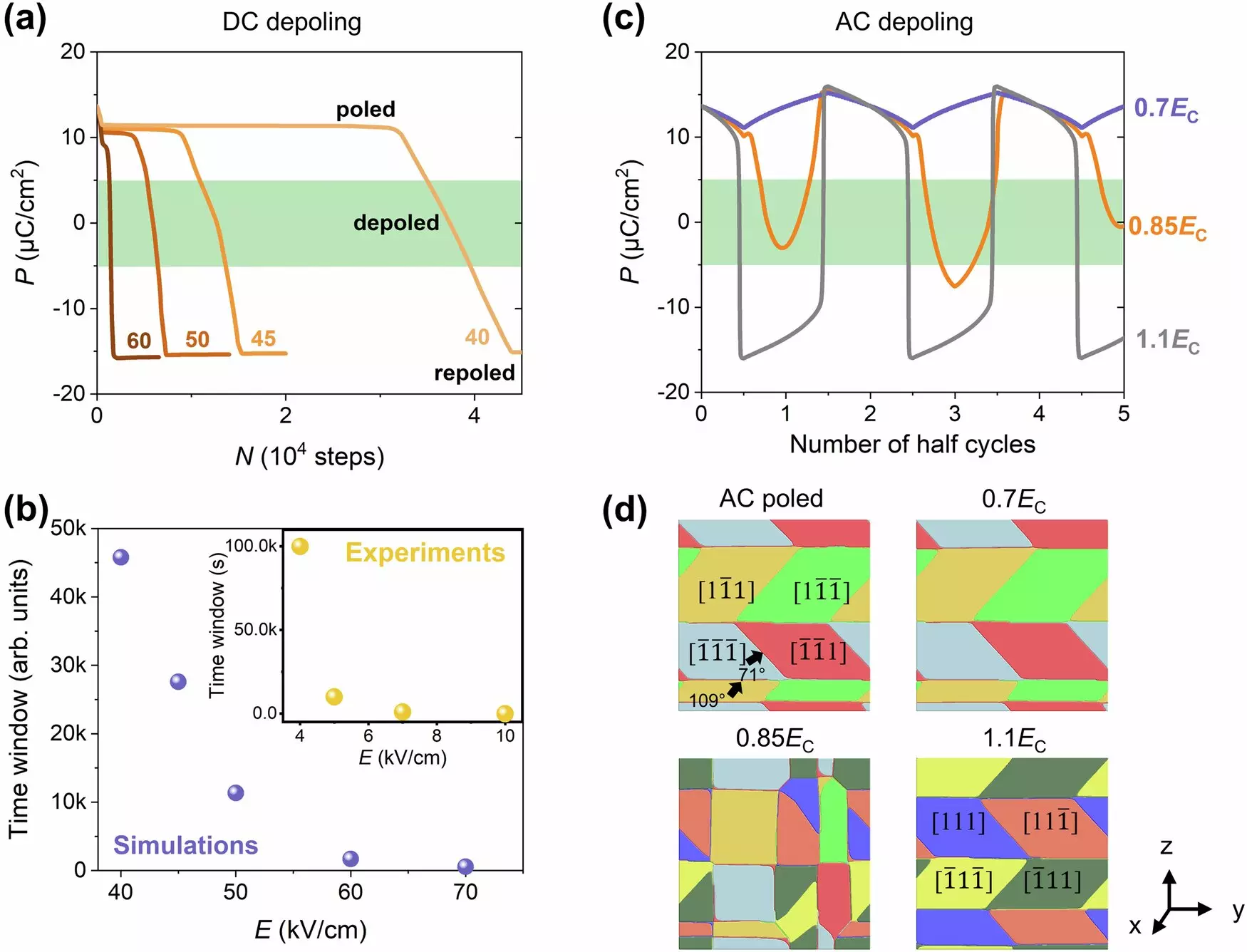Piezoelectric materials have become indispensable in a variety of modern technologies, particularly in fields like ultrasound and sonar. These materials possess a unique capability to convert mechanical energy into electrical energy and vice versa. This property, stemming from their ferroelectric nature, allows for the generation and sensing of sound waves essential for various applications. For these materials to function optimally, they must be “poled,” a process that aligns the dipoles within the material. Dipoles are pairs of positive and negative charges that, when aligned, enhance the material’s piezoelectric properties, critical for producing effective ultrasound and sonar waves.
However, maintaining this alignment poses significant challenges, especially under conditions of heat and pressure. Traditional methods to restore the poling of these materials involve disassembling the devices and exposing the piezoelectric components to high temperatures, which can lead to unnecessary complexity and waste.
Challenges in Restoring Piezoelectric Properties
The degradation of piezoelectric materials due to environmental factors like temperature and pressure is a critical issue. Studies indicate that even moderately elevated temperatures, as low as 70°C, can cause the dipoles in these materials to lose their alignment, leading to decreased performance in generating targeted ultrasound waves.
Professor Xiaoning Jiang, a leading expert in mechanical and aerospace engineering, emphasizes that this misalignment not only hampers the efficiency of the devices but also complicates manufacturing processes. The necessity to use high heat—typically above 300°C—during the repoling process can be detrimental, resulting in the loss of expensive materials and the need to dispose of functional yet compromised devices. This not only raises concerns about material waste but poses considerable financial implications in industries relying on such technologies.
Innovative Room Temperature Technique
Recent research has brought forth a groundbreaking technique that allows for the depoling and repoling of piezoelectric materials at room temperature. This innovation is pivotal, fundamentally changing the way piezoelectric materials can be repaired and maintained. With the ability to realign the dipoles without dismantling the devices, manufacturers are not only presented with a more efficient method but also a sustainable one that reduces waste.
The study, titled “Electrical De-poling and Re-poling of Relaxor-PbTiO3 Piezoelectric Single Crystals without Heat Treatment,” highlights the feasibility of utilizing an alternating current (AC) electric field for both depoling and repoling, thereby enabling processes to be conducted at significantly lower temperatures. This breakthrough could facilitate a more stable environment for piezoelectric components throughout their lifecycle and restores their performance without the complications associated with high-temperature treatments.
To grasp the significance of this advancement, one must understand the mechanisms employed in aligning dipoles within piezoelectric materials. The conventional method, involving a direct current (DC) electric field, efficiently aligns dipoles but does not allow for easy restoration after depoling. Alternatively, the application of an AC electric field can induce oscillations in the dipoles, thereby allowing for a more flexible approach to achieve alignment.
The findings from Jiang’s research illustrate that materials originally poled with an AC field can be fully depolarized using the same method, a significant advantage in enhancing the efficiency of repair processes and the longevity of devices that utilize these materials.
The ramifications of this research extend beyond mere repair techniques; it signals a new era for the development of ultrasound technologies. By allowing for the poling of piezoelectric materials at room temperature, manufacturers are liberated from the constraints imposed by the traditional need for high-temperature processing. Such freedom opens the door to exploring alternative materials and more innovative manufacturing techniques, creating an opportunity to optimize device performance in previously unimaginable ways.
This innovation in the realm of piezoelectric materials represents not only a technical advancement but a shift towards sustainable practices in technology manufacturing. As researchers continue to unravel the complexities of piezoelectric behavior, the potential for enhanced ultrasound and sonar technologies looks promising— ushering in a new age of more efficient, cost-effective, and environmentally friendly solutions.

